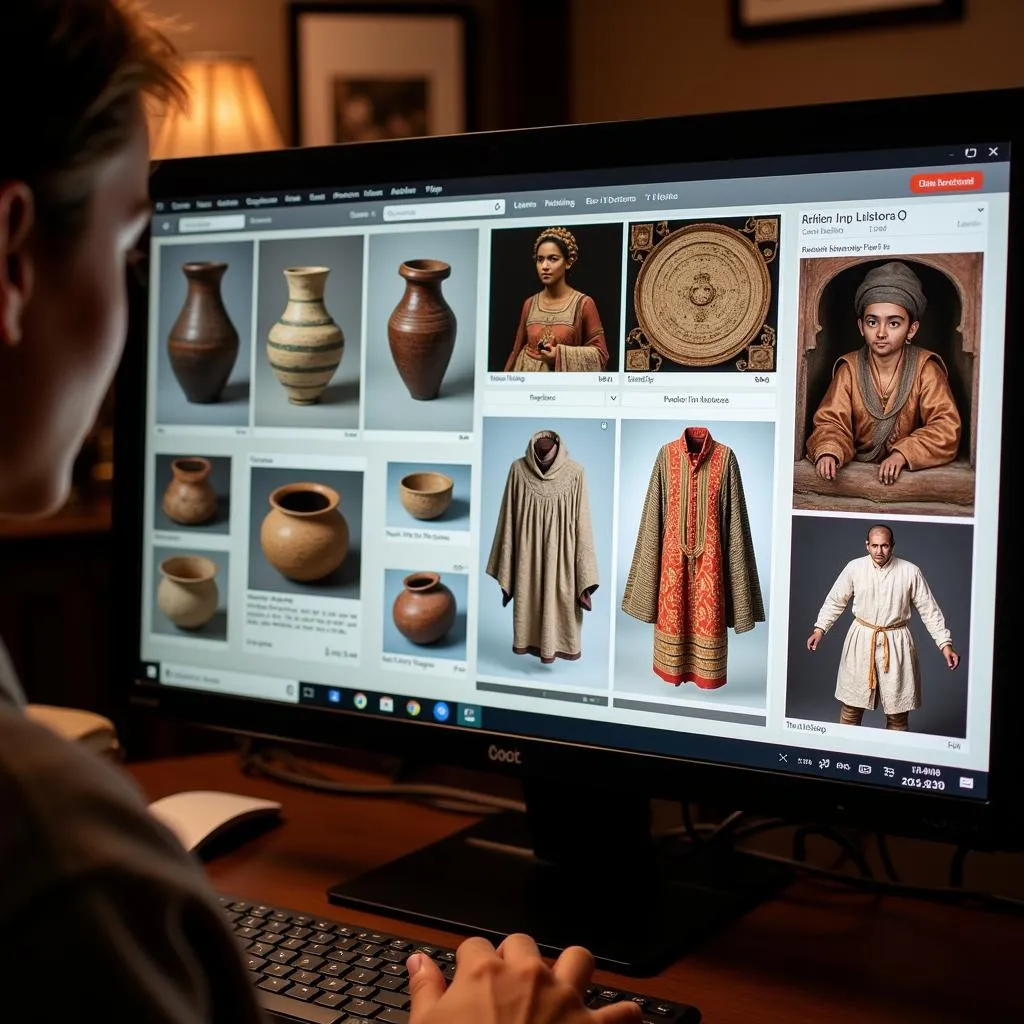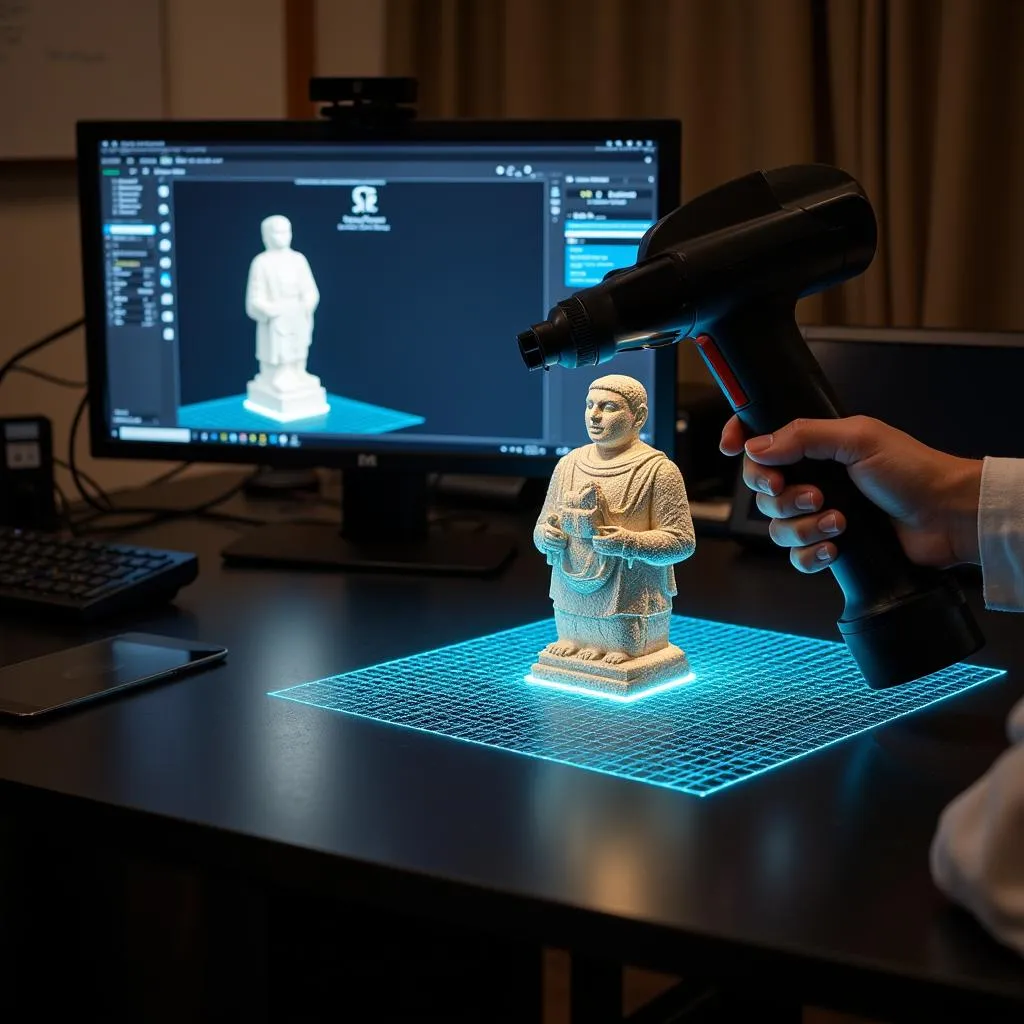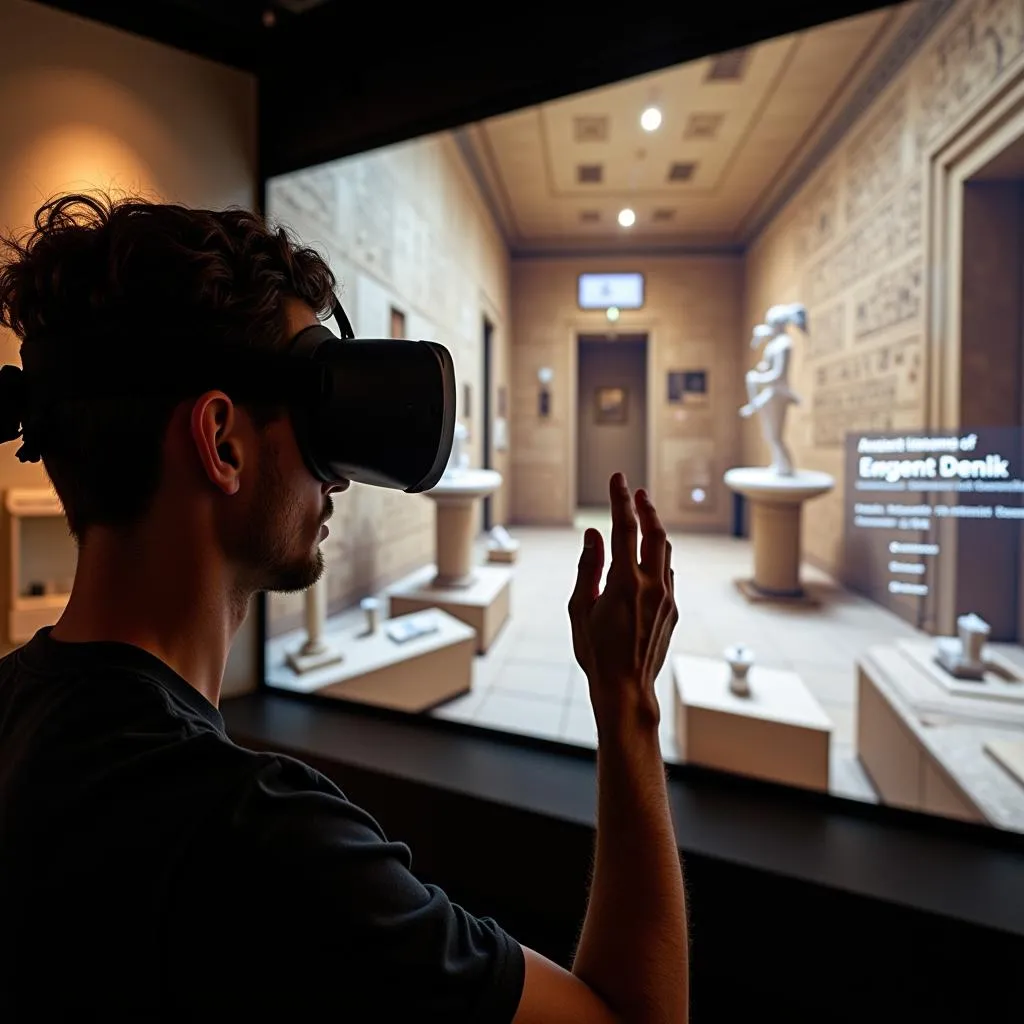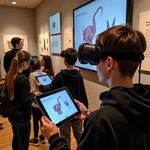The intersection of technology and cultural heritage has given rise to virtual museums, revolutionizing the way we preserve and interact with cultural artifacts. These digital platforms offer unprecedented access to historical treasures, allowing visitors from around the world to explore and learn about diverse cultures without geographical limitations.
How cultural heritage sites are used in virtual learning has become increasingly relevant in today’s digital age. Virtual museums play a crucial role in this context, providing immersive experiences that bridge the gap between traditional museum visits and modern educational needs.
To better understand the impact of virtual museums on cultural preservation, let’s explore this topic through an IELTS Reading exercise. This practice test will challenge your comprehension skills while providing insights into the fascinating world of digital cultural heritage.
IELTS Reading Practice Test
Passage 1 – Easy Text
Virtual Museums: A New Era of Cultural Preservation
The concept of virtual museums has gained significant traction in recent years, offering a novel approach to preserving and showcasing cultural artifacts. These digital platforms utilize cutting-edge technology to create immersive experiences that allow visitors to explore exhibitions from the comfort of their homes. Unlike traditional museums, virtual museums are not constrained by physical space or geographical boundaries, enabling them to display a vast array of artifacts and reach a global audience.
One of the primary advantages of virtual museums is their ability to preserve fragile or rare artifacts without risking damage from handling or environmental factors. High-resolution imaging and 3D scanning techniques allow for the creation of detailed digital replicas that can be examined closely by researchers and enthusiasts alike. This digital preservation ensures that even if the original artifact deteriorates over time, its likeness and historical significance are maintained for future generations.
Moreover, virtual museums offer interactive features that enhance the learning experience. Visitors can often zoom in on artifacts, rotate 3D models, and access additional information through multimedia presentations. This level of engagement can be particularly beneficial for educational purposes, allowing students to explore cultural heritage in ways that were previously impossible.
The accessibility of virtual museums also democratizes cultural education. People who may not have the means or ability to visit physical museums can now access world-class collections from anywhere with an internet connection. This inclusivity helps to break down barriers to cultural understanding and appreciation, fostering a more globally connected society.
However, it’s important to note that virtual museums are not intended to replace traditional museums entirely. Instead, they complement physical institutions by offering alternative ways to engage with cultural heritage. Many museums now adopt a hybrid approach, maintaining both physical and virtual presences to cater to diverse audience preferences and needs.
 Virtual museum interface showcasing cultural artifacts
Virtual museum interface showcasing cultural artifacts
Questions 1-5
Do the following statements agree with the information given in the reading passage?
Write:
- TRUE if the statement agrees with the information
- FALSE if the statement contradicts the information
- NOT GIVEN if there is no information on this
- Virtual museums can only display a limited number of artifacts due to digital storage constraints.
- Digital replicas of artifacts can be examined more closely than physical objects in traditional museums.
- Virtual museums offer interactive features that are not possible in physical museums.
- The creation of virtual museums has led to a decrease in visitors to traditional museums.
- Virtual museums are intended to completely replace physical museums in the future.
Questions 6-10
Complete the sentences below.
Choose NO MORE THAN THREE WORDS from the passage for each answer.
- Virtual museums use __ to create immersive experiences for visitors.
- High-resolution imaging and 3D scanning are used to create __ of artifacts.
- Virtual museums are particularly useful for __ purposes, allowing students to explore cultural heritage in new ways.
- The __ of virtual museums helps to democratize cultural education.
- Many museums now adopt a __ approach, maintaining both physical and virtual presences.
Passage 2 – Medium Text
The Digital Renaissance: How Virtual Museums Transform Cultural Preservation
The advent of virtual museums marks a significant paradigm shift in the realm of cultural preservation. These digital platforms are not merely online repositories of images; they represent a sophisticated amalgamation of technology and curatorial expertise that is reshaping our interaction with cultural heritage. As traditional museums grapple with limited exhibition space and the challenges of preserving delicate artifacts, virtual museums offer innovative solutions that extend far beyond the constraints of physical walls.
One of the most compelling aspects of virtual museums is their capacity for comprehensive documentation. Through advanced digitization techniques, including photogrammetry and laser scanning, cultural artifacts can be captured in minute detail, creating high-fidelity 3D models. These digital twins serve multiple purposes: they provide a precise record for conservation efforts, enable remote study by researchers, and offer the public an unprecedented level of access to cultural treasures.
The immersive experiences facilitated by virtual museums are transforming educational approaches to cultural heritage. The rise of virtual field trips for cultural exploration has made it possible for students to ‘visit’ historical sites and museums from across the globe, transcending geographical and financial barriers. These virtual excursions often incorporate augmented reality (AR) and virtual reality (VR) technologies, allowing users to interact with artifacts in ways that would be impossible in traditional museum settings.
Furthermore, virtual museums play a crucial role in the preservation of intangible cultural heritage. Oral traditions, performing arts, and social practices that are integral to cultural identity can be documented and shared through multimedia platforms. This digital safeguarding ensures that future generations can experience and learn from cultural practices that might otherwise be lost to time.
The democratization of access to cultural artifacts is perhaps one of the most significant impacts of virtual museums. By removing physical and economic barriers, these platforms enable a global audience to engage with cultural heritage. This inclusivity not only broadens cultural understanding but also fosters a sense of shared human history that transcends national boundaries.
However, the rise of virtual museums also presents new challenges. Digital curation requires a distinct set of skills that blend technological proficiency with traditional museology. Additionally, ensuring the long-term preservation of digital assets poses unique challenges, as file formats and storage technologies evolve rapidly.
Despite these challenges, the potential of virtual museums to revolutionize cultural preservation is undeniable. As technology continues to advance, we can anticipate even more innovative approaches to safeguarding and sharing our collective cultural heritage. The digital renaissance in museology is not just about preserving the past; it’s about creating new pathways for cultural engagement and understanding in the future.
 3D scanning of a cultural artifact
3D scanning of a cultural artifact
Questions 11-14
Choose the correct letter, A, B, C, or D.
-
According to the passage, virtual museums are:
A) Online image galleries
B) A combination of technology and curatorial expertise
C) Replacements for physical museums
D) Limited to 3D modeling of artifacts -
The digital twins created by virtual museums:
A) Are used solely for public viewing
B) Serve multiple purposes including conservation and research
C) Can only be accessed by museum professionals
D) Are less detailed than the original artifacts -
Virtual field trips in cultural exploration:
A) Are limited to local museums
B) Can only be experienced through VR headsets
C) Allow students to visit historical sites globally
D) Are less effective than physical visits -
The democratization of access to cultural artifacts through virtual museums:
A) Is limited to a select group of researchers
B) Only benefits wealthy individuals
C) Removes physical and economic barriers to cultural engagement
D) Has no impact on cultural understanding
Questions 15-19
Complete the summary below.
Choose NO MORE THAN TWO WORDS from the passage for each answer.
Virtual museums represent a significant shift in cultural preservation, offering solutions to challenges faced by traditional museums. They use advanced techniques like (15) __ and laser scanning to create detailed 3D models of artifacts. These digital platforms provide (16) __ experiences that transform educational approaches to cultural heritage. Virtual museums also play a crucial role in preserving (17) __ cultural heritage, such as oral traditions and performing arts. The (18) __ of access to cultural artifacts is a major impact of virtual museums, enabling a global audience to engage with cultural heritage. However, virtual museums also present challenges, including the need for skills in (19) __ and ensuring long-term preservation of digital assets.
Passage 3 – Hard Text
The Metamorphosis of Cultural Preservation: Virtual Museums as Catalysts for Global Heritage Engagement
The emergence of virtual museums represents a paradigmatic shift in the realm of cultural preservation, heralding an era where digital innovation intersects with centuries-old traditions of curation and conservation. This technological revolution is not merely a superficial digitization of existing museum catalogs; rather, it constitutes a fundamental reimagining of how cultural artifacts are preserved, studied, and experienced. The ramifications of this shift extend far beyond the confines of traditional museology, influencing fields as diverse as education, anthropology, and international relations.
At the core of the virtual museum concept lies an unprecedented democratization of access to cultural heritage. By transcending physical and geographical limitations, these digital platforms dismantle longstanding barriers to cultural engagement, fostering a more inclusive global dialogue. This accessibility is particularly salient in the context of rare or fragile artifacts, which can now be examined in minute detail by scholars and enthusiasts alike, without risk of degradation. The high-fidelity digital reproductions enabled by advanced imaging technologies not only preserve the visual characteristics of artifacts but also capture subtle details that may be imperceptible to the naked eye, thus opening new avenues for research and analysis.
The immersive capabilities of virtual museums extend beyond mere visual representation. Through the integration of augmented reality (AR) and virtual reality (VR) technologies, these platforms offer multisensory experiences that blur the lines between observation and interaction. Visitors can manipulate 3D models of artifacts, explore reconstructed historical environments, and even participate in simulated cultural practices. This level of engagement fosters a deeper, more intuitive understanding of cultural contexts and historical narratives, potentially revolutionizing educational methodologies across disciplines.
Moreover, virtual museums serve as powerful tools for the preservation and revitalization of intangible cultural heritage. Oral traditions, ritualistic practices, and performative arts—elements that are often challenging to document and transmit through traditional means—can be captured and disseminated with unprecedented fidelity. The impact of digital storytelling on cultural preservation is particularly significant in this context, allowing for the creation of immersive narratives that convey not just the facts, but the emotional and cultural resonance of historical events and traditions.
The curatorial implications of virtual museums are profound and multifaceted. Digital curation demands a new synthesis of skills, combining traditional museological expertise with technological proficiency and an understanding of digital user experience. This evolution in curatorial practice necessitates a reevaluation of longstanding principles of exhibition design, conservation, and interpretation. The virtually unlimited ‘space’ of digital platforms allows for more comprehensive and dynamic presentations of collections, enabling curators to create multilayered narratives that cater to diverse audiences and learning styles.
However, the transition to virtual museology is not without its challenges. Questions of digital preservation loom large, as the rapid evolution of technology raises concerns about the long-term accessibility and integrity of digital artifacts. The issue of authenticity in the digital realm is also contentious, with debates centering on the value and status of digital reproductions in relation to their physical counterparts. Furthermore, the global reach of virtual museums brings to the fore complex ethical and legal questions regarding cultural ownership, repatriation, and the representation of sensitive historical narratives.
Despite these challenges, the potential of virtual museums to revolutionize cultural preservation and engagement is immense. By facilitating unprecedented access to global cultural heritage, these platforms have the power to foster intercultural understanding and appreciation on a scale previously unimaginable. As technology continues to evolve, we can anticipate even more sophisticated and immersive virtual museum experiences, further blurring the lines between the physical and digital realms of cultural engagement.
The role of educational websites in promoting cultural heritage is closely aligned with the mission of virtual museums, creating a synergy that amplifies the impact of both. This collaborative approach to digital cultural preservation not only ensures the safeguarding of our collective heritage but also opens new pathways for global cultural dialogue and exchange.
In conclusion, virtual museums stand at the vanguard of a digital renaissance in cultural preservation. Their emergence challenges us to reconsider fundamental concepts of museology, cultural ownership, and the very nature of the museum experience itself. As we navigate this transformative period, it is clear that virtual museums will play an increasingly central role in shaping our understanding and appreciation of global cultural heritage for generations to come.
 Virtual reality museum experience
Virtual reality museum experience
Questions 20-23
Choose the correct letter, A, B, C, or D.
-
The passage suggests that virtual museums primarily:
A) Replace traditional museums entirely
B) Provide a new way to preserve and experience cultural artifacts
C) Are limited to visual representations of artifacts
D) Focus solely on rare and fragile artifacts -
According to the text, the immersive capabilities of virtual museums:
A) Are restricted to visual experiences
B) Only benefit professional researchers
C) Offer multisensory experiences through AR and VR technologies
D) Have no impact on educational methodologies -
The curatorial implications of virtual museums include:
A) A complete abandonment of traditional museological principles
B) A focus solely on technological skills
C) A new synthesis of traditional expertise and digital proficiency
D) A decrease in the importance of exhibition design -
The challenges faced by virtual museums, as mentioned in the passage, do NOT include:
A) Issues of digital preservation
B) Questions of authenticity
C) Ethical and legal questions regarding cultural ownership
D) Limited access to global audiences
Questions 24-26
Complete the sentences below.
Choose NO MORE THAN THREE WORDS from the passage for each answer.
- Virtual museums enable the creation of __ that convey both facts and cultural resonance of historical events.
- The __ of digital platforms allows curators to create more comprehensive presentations of collections.
- Virtual museums have the potential to foster __ on an unprecedented scale.
Questions 27-30
Do the following statements agree with the claims of the writer in the reading passage?
Write:
- YES if the statement agrees with the claims of the writer
- NO if the statement contradicts the claims of the writer
- NOT GIVEN if it is impossible to say what the writer thinks about this
- Virtual museums completely eliminate the need for physical museums.
- The integration of AR and VR technologies in virtual museums enhances the understanding of cultural contexts.
- Digital curation requires the same skill set as traditional museum curation.
- Virtual museums will eventually solve all issues related to cultural ownership and repatriation.
Answer Key
Passage 1
- FALSE
- TRUE
- TRUE
- NOT GIVEN
- FALSE
- cutting-edge technology
- digital replicas
- educational
- accessibility
- hybrid
Passage 2
- B
- B
- C
- C
- photogrammetry
- immersive
- intangible
- democratization
- digital curation
Passage 3
- B
- C
- C
- D
- immersive narratives
- virtually unlimited ‘space’
- intercultural understanding
- NO
- YES
- NO
- NOT GIVEN
This IELTS Reading practice test explores the fascinating world of virtual museums and their role in preserving cultural artifacts. The passages progress from an easy introduction to more complex discussions of the technological and cultural implications of digital heritage preservation. The impact of digital art on cultural heritage is closely related to this topic, as virtual museums often incorporate digital art forms in their presentations.
By engaging with these texts, you’ve not only practiced crucial IELTS Reading skills but also gained insights into how technology is revolutionizing cultural preservation and access. Remember to apply critical reading strategies, such as identifying main ideas, understanding context, and inferring meaning, as you prepare for your IELTS exam. Good luck with your studies!


